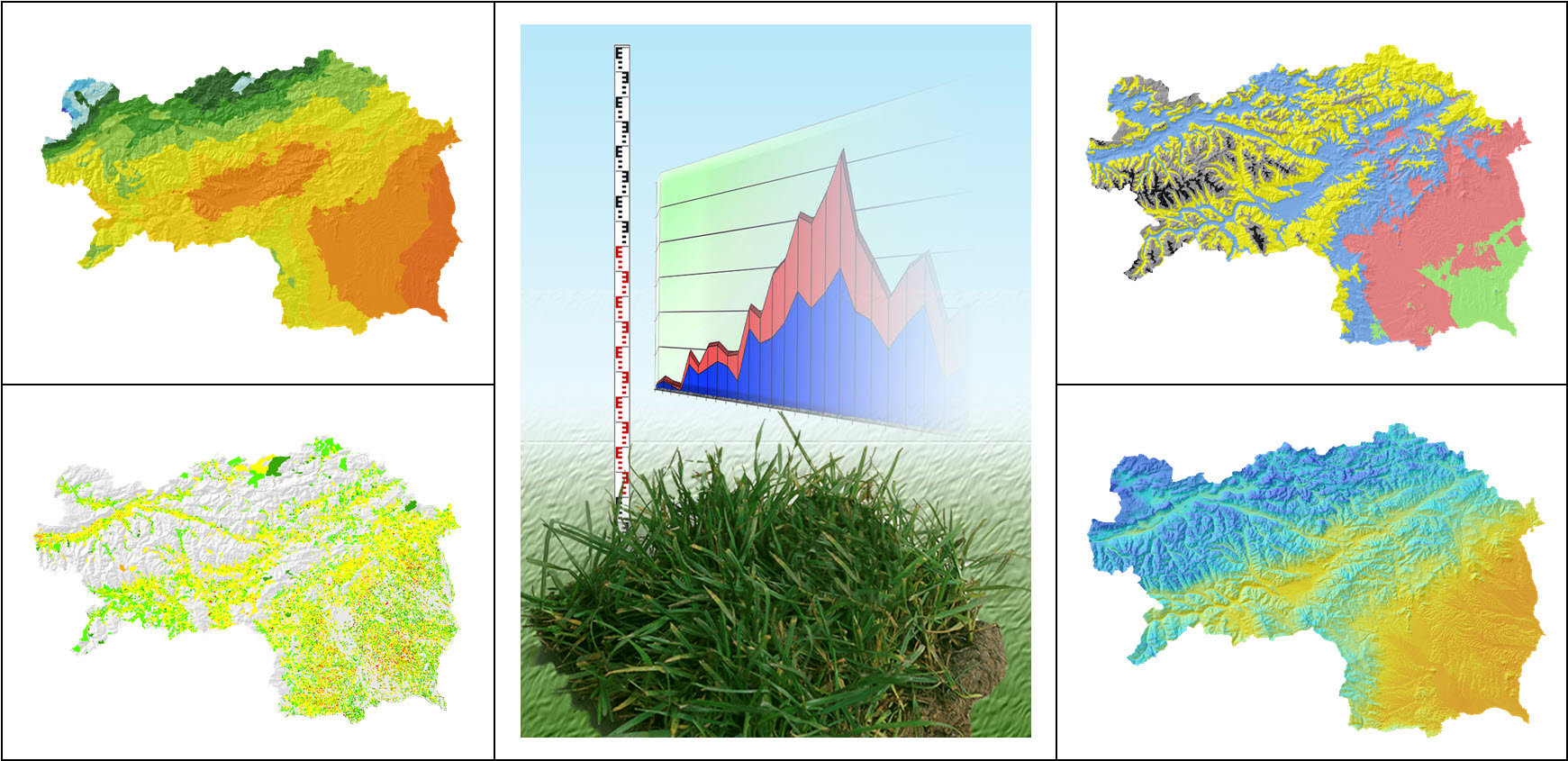Climate simulations show that grassland growth will be disproportionately high in spring, since after winter the soil can be expected to be saturated with water (winter moisture) and at the same time the energy input in the form of heat and radiation will increase. As long as soil water is not or only slightly limited and high evaporation allows the plants to utilize this energy, this will promote growth. In summer and autumn, however, there will be a decline in yields, which will be particularly severe in those areas where there is little soil support, which are exposed to the south and where the water deficit is high. If water stress persists, the plant population can also be damaged, which leads to consequential damage and makes compensatory grassland maintenance measures necessary. From a spatial perspective, grassland farming in southern and eastern Styria will suffer, but the Murtal will also be affected. The Salzkammergut and the Enns and Paltental will benefit from the higher temperatures and a longer growing season and will generate more yields, as there will also be a decrease in precipitation in summer, but in relative terms it will be lower.
Schaumberger, A. (2009): Application of climate model data for high-resolution spatial modeling of potential evapotranspiration as an indicator of drought: An analysis for Styria, final report, HBLFA Raumberg-Gumpenstein, Irdning, 81-134.
Schaumberger, A. (2009): Agricultural yield development and drought risk under changed climatic conditions in Styria, final report, HBLFA Raumberg-Gumpenstein, Irdning, 59 p.
Gobiet, A., Schaumberger, A., Heinrich, G., Steiner, M., Leuprecht, A., Themeßl, M., Buchgraber, K. (2009): AgroClim II - Agricultural yield development and drought hazard under changed climate conditions in the Styria, final report, Wegener Center and HBLFA Raumberg-Gumpenstein, 98 p.







